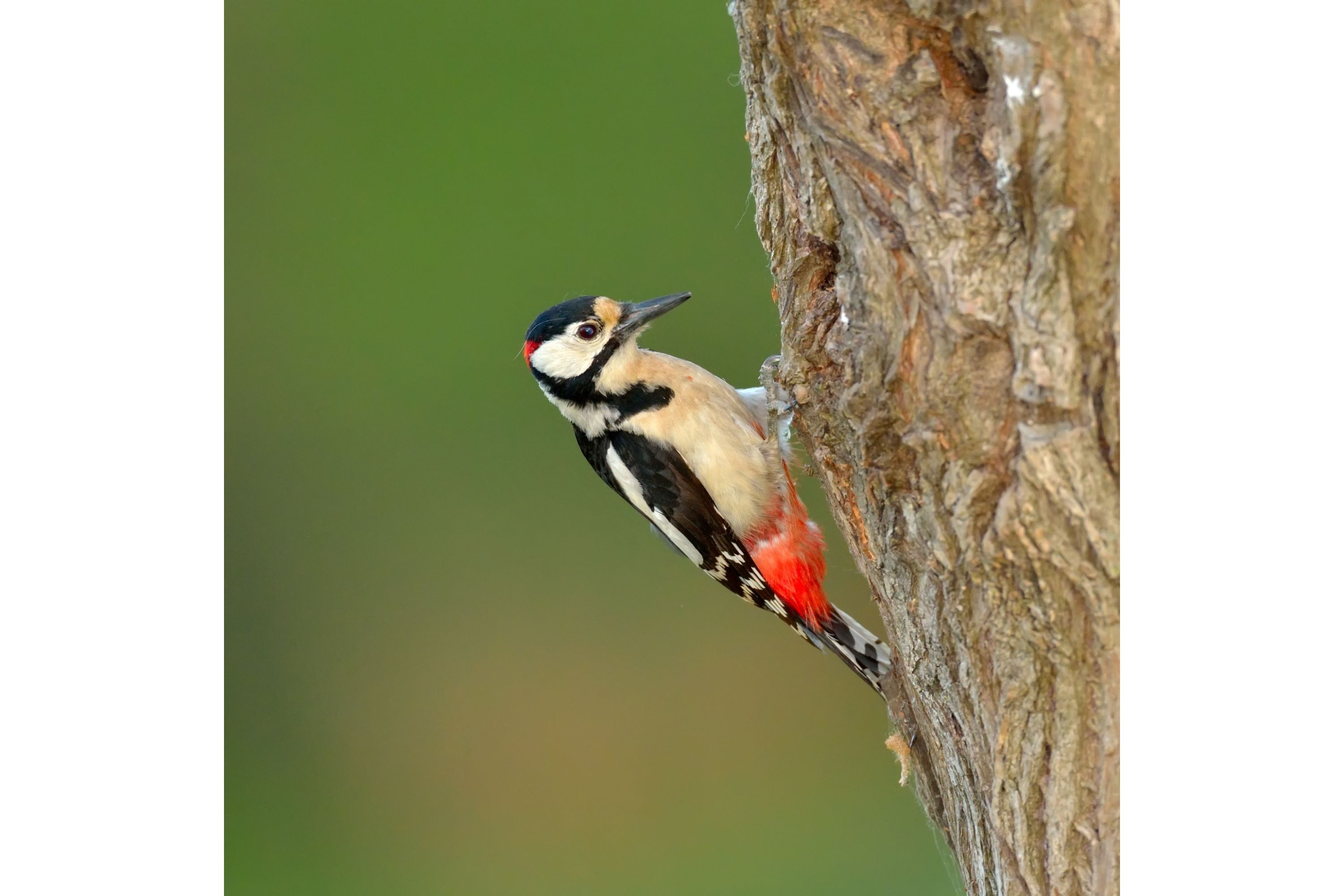Downy woodpecker
(Picoides pubescens)

Description
Picoides pubescens, commonly known as the Downy Woodpecker, is a small-sized bird that is native to North America. It belongs to the family Picidae, which consists of about 240 species of woodpeckers worldwide. Downy Woodpeckers are known for their distinctive markings, drumming behavior, and feeding habits. In this article, we will delve into the fascinating world of Picoides pubescens and explore its physical characteristics, behavior, habitat, and conservation status. Physical Characteristics: The Downy Woodpecker is a small bird, measuring between 5.5 and 6.7 inches in length and weighing between 0.7 and 1.0 ounces. It has a black and white striped pattern on its back, with a white belly and black wings. Males have a red patch on the back of their head, while females do not. The Downy Woodpecker is often mistaken for the Hairy Woodpecker (Picoides villosus), which is larger in size and has a longer bill. The easiest way to distinguish between the two species is by looking at the length of the bill in proportion to the head size. The Downy Woodpecker has a relatively shorter bill than the Hairy Woodpecker. Behavior: The Downy Woodpecker is a highly active and agile bird, known for its acrobatic feats as it climbs up, down, and around tree trunks and branches. They are non-migratory and can be seen year-round in their breeding territories, where they defend their territory through vocalizations and physical displays such as drumming on trees. During the breeding season, male Downy Woodpeckers will engage in courtship displays, including bobbing their heads, flicking their wings, and calling out to potential mates. Once a mate is selected, both the male and female will work together to excavate a nest cavity in a dead tree or branch. The female will lay a clutch of 3-8 eggs, which are incubated by both parents for around two weeks until they hatch. The young are fed by both parents and fledge from the nest after around 20-25 days. The Downy Woodpecker is primarily a solitary bird, although they may form small family groups during the breeding season. They communicate with each other through a variety of vocalizations, including a distinctive drumming sound that is produced by rapidly tapping their bill against a tree trunk or branch. This drumming is used to establish territory, communicate with mates, and locate insects under the bark of trees. During the winter months, Downy Woodpeckers may join mixed-species flocks with other birds, including chickadees, nuthatches, and titmice, which can provide benefits such as increased foraging efficiency and predator detection. Overall, the Downy Woodpecker is a highly adaptable and resourceful bird, able to thrive in a variety of habitats and adapt its behavior to changing environmental conditions. Diet: The Downy Woodpecker is primarily an insectivore, feeding on a variety of insects and their larvae, including ants, beetles, caterpillars, and spiders. They are also known to feed on tree sap and fruits, as well as seeds and nuts such as sunflower seeds, peanuts, and suet. Downy Woodpeckers are well adapted for foraging on trees, using their stiff tail feathers to brace themselves while they use their sharp beaks to probe for insects hidden under bark or in crevices. They also use their long, barbed tongue to extract insects from tree holes or crevices. During the winter months, Downy Woodpeckers may visit bird feeders in search of food, particularly if natural food sources are scarce. Overall, the Downy Woodpecker is a versatile feeder, able to adapt its diet to the available food sources in its environment. Habitat: The Downy Woodpecker can be found in a variety of habitats throughout North America, including deciduous forests, mixed forests, orchards, and suburban areas. They are commonly found in wooded areas with a mix of tree species and a variety of vegetation. Downy Woodpeckers also prefer habitats with dead trees and decaying wood, which provide an abundant source of insects for feeding. They can be found at elevations ranging from sea level to over 12,000 feet in the western United States. Overall, the Downy Woodpecker is a highly adaptable species that can thrive in a range of habitats as long as their basic requirements for food, shelter, and nesting sites are met. Conservation Status: The Downy Woodpecker is classified as a species of "Least Concern" by the International Union for Conservation of Nature (IUCN), which means that it is not currently considered to be at significant risk of extinction. This is largely due to its relatively large population size, estimated at over 13 million individuals across its range in North America. The Downy Woodpecker has a stable population trend, although localized declines have been observed in some areas due to habitat loss and fragmentation. The species is also protected under the Migratory Bird Treaty Act in the United States, which prohibits the hunting, capturing, or killing of the species without a permit. However, like all bird species, the Downy Woodpecker is vulnerable to threats such as habitat loss and degradation caused by human activities, including deforestation, urbanization, and agriculture. Therefore, continued monitoring and conservation efforts are necessary to ensure the long-term survival of the species. Conclusion: In conclusion, the Downy Woodpecker is a fascinating bird that is well adapted to its environment. Its distinctive markings, drumming behavior, and feeding habits make it a popular bird among birdwatchers and nature enthusiasts. While its conservation status is currently stable, it is important to continue monitoring its populations and habitat to ensure that it remains a healthy and thriving species in North America.
Taxonomic tree:







